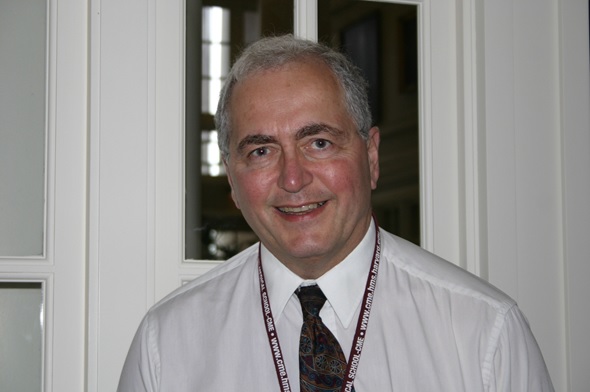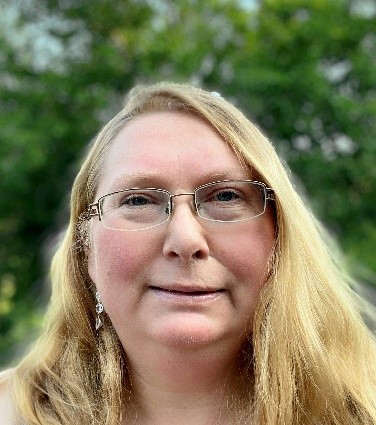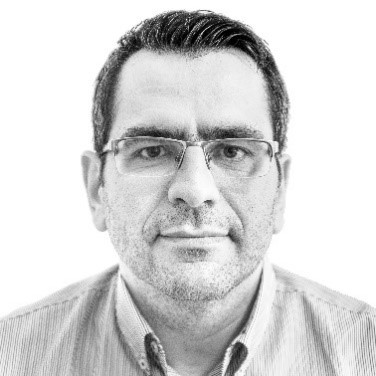|

Yvonne A.W. de Kort, NL
AN INTEGRATIVE PERSPECTIVE ON DYNAMIC LIGHTING, AND HOW IT SHOULD BE STUDIED
|
|
1. Motivation, specific objective
Scientific literature tells us that lighting has the potential to make compelling contributions to physical and mental health of individuals. Industry, project developers and even individual users appear eager to ride this wave of promise and harvest the relevant biological and psychological effects that isolated research outcomes promise. But we are gradually learning that in lighting, the devil may not be in the details, but rather in the larger whole. Integrative lighting was coined by the CIE to refer to lighting that is specifically intended to integrate visual and non-visual effects and to produce beneficial physiological and psychological effects on humans. The term captures what many in our domain strive for but at the same time is still a tall order for researchers and designers alike: integration may well prove to be a more formidable ambition than hoped. The current presentation will reflect on relevant challenges and how to potentially tackle them, specifically for the investigation of dynamic lighting.
2. Methods
We performed a structured review on ‘dynamic light’ and have performed a number of studies on this phenomenon in controlled laboratory conditions as well as field settings. Without exception, the ambition was to take an integrative perspective in each of these studies, through the inclusion of measures capturing subjective and objective responses, responses that were experiential, behavioural and physiological in nature.
3. Results
The review taught us that the effects, nature, and even the intent of dynamic lighting are under investigated and inconsistent across studies and implementations. But embarking on the empirical study of this phenomenon ourselves, numerous theoretical, empirical and particularly methodological issues arose, that almost disheartened us in our, perhaps overly ambitious, goal to bring progress here. This paper will highlight some of the obstacles encountered – from knowledge gaps on individual mechanisms, to wildly varying temporal scales at which they work, to limitations in the lab and in the field in intervention, measurement and analysis techniques – and aims to present ideas to overcome some of them.
4. Conclusions
Integrative Dynamic Lighting - Are we there yet? It may come as no surprise that, to date, the only reasonable answer to this question is “no”. But importantly, we would like to convey the message that the path towards it may call on us to not only perform additional research, but to also reconceive research design, in terms of how, when, and where we perform it, from a new, integrative perspective.
|
|
CV:
Yvonne de Kort is professor Contextual aspects of Human-Technology Interaction / Environmental Psychology at Eindhoven University of Technology, The Netherlands. She investigates the effects of light and natural views on human functioning. With her group, she investigates effects of lighting conditions on mental state (e.g., vigilance, vitality), behaviour (e.g., performance) and health-related phenomena (e.g., physiology, sleep), combining psychology, chronobiology, engineering and neuroscience.
Her group has become internationally recognized as a competent group with a unique expertise on the crossroads of light, psychology, biology/neurosciences and technology. They have chosen their niche as experts in effects of light and light exposure for day-active people. Their research agenda is translational and integrative. The research has resulted in numerous publications, many of which in high quality journals in the different relevant domains. Yvonne is program manager in TU/e’s Intelligent Lighting Institute and coordinator in the strategic alliance on technical and social innovation for mental health care between TU/e, Tilburg University and GGzE, a regional mental health care organization. She is involved in multiple European and nationally funded projects and particularly proud to coordinate LIGHTCAP - a European Training Network under the Marie Skłodowska-Curie ITN framework, which combines the strengths of 7 international academic groups and prepares 15 PhD students to become innovative researchers in the domain of light effects on human functioning.
|
|

Edward A. Nardell, USA
VIRAL PANDEMICS: WHY GERMICIDAL UV AIR DISINFECTION IS ESSENTIAL
|
|
The Covid-19 pandemic is far from over, but it will not be the last pandemic – almost certainly caused by viral pathogens, and likely to spread by aerosol – the most efficient mode of viral transmission. Before SARS-CoV-2 emerged, an H1N1 pandemic was considered long overdue. Aerosol transmission is now widely accepted as the principal way that Covid-19 is spread, as has the importance of ventilation – natural and mechanical. Natural ventilation is critical, but dependent on building design and occupant cooperation, where outside conditions permit open windows.
But where present, other than for health care facilities, mechanical ventilation is designed for comfort, not airborne infection control, and cannot achieve the 6 to 12 room air changes per hour (ACH) recommended for airborne infection control. More efficient air filters have been recommended in ventilation ducts despite a lack of convincing evidence of any significant spread of the SARS-CoV-2 virus spreads through ventilation systems. Most transmission appears to occur in rooms where both an infectious source Covid-19 case and other susceptible occupants share the same air.
Only two well-established, evidence-based room air disinfection technologies are available to supplement mechanical ventilation: portable room air cleaners and upper room germicidal UV air disinfection. Portable room air cleaners (employing filters, UV, or both) can be effective, but performance is limited by their clean air delivery rate relative to the room volume. Moving enough air through portable room air cleaners to produce the equivalent of 6-12 ACH is possible in theory, but the unobtrusive, quiet room units deployed often add no more than just one or two equivalent air changes. Producing 6-12 ACH would likely be noisy, draftee, and likely require multiple units for other than small rooms. Recapturing and reprocessing just treated air (short-circuiting) is another limitation of room air cleaners because the unit intake location must be reasonably close to the unit discharge register.
SARS-CoV-2 and all other viral pathogens tested are highly susceptible to germicidal ultraviolet GUV light, an 80-year-old technology that has been shown to safely, quietly, effectively, and economically produce the equivalent of 10 to 20 or more equivalent ACH under real life conditions. Studied extensively for safety and efficacy in the 30’s and 40’s, interest in air disinfection waned after the introduction of vaccines for common communicable viral infections, and antibiotics for TB. Germicidal water disinfection has remained standard practice. Globally, the emergence of drug resistant TB over the last 25 years has led to continued commercial development, research, and application of upper room GUV in hospitals, clinics, jails, homeless shelters, and other congregate setting in high-burden settings.
Upper room GUV fixtures are designed to keep the low-penetrating 254 nm irradiance in the upper room, safely above the heads of occupants. Upper room GUV irradiates and rapidly disinfects the upper 15-25% volume of room air. Vertical air mixing between the upper and occupied lower room results in equivalent air changes in the lower room routinely measured at 10-20 ACH without noise or drafts. Low velocity ceiling fans and other air mixers can further increase lower room air disinfection. Well-established UV exposure limits for room occupants allow both safe and effective installations.
Conclusions: Although vaccines are the main way that SARS-CoV-2 and future epidemic and pandemic airborne viruses will be controlled, transmission indoors can be reduced by effective air disinfection. Beyond natural ventilation, where possible, the most practical, safe, and effective technology for air disinfection is upper room UV.
|
|
CV:
Professor of Medicine, Harvard Medical School
Associate physician, Brigham & Women’s Hospital
Division of Global Health Equity
Division of Pulmonary and Critical Care Medicine
Professor of Public Health
T.H. Chan School of Public Health
Department of Environmental Health
Department of Immunology and Infectious Diseases
Dr. Nardell’s early career as a pulmonologist at the Cambridge Hospital, with an academic focus on tuberculosis, initially domestic TB, as TB Control Officer at various times for Boston, Cambridge, and the Commonwealth of Massachusetts.
In 2005 he left the Massachusetts DPH, and subsequently Cambridge Hospital, to delve into global TB control in Dr. Paul Farmer’s Division of Global Health at Brigham & Women's Hospital, to guide MDR-TB treatment in Peru and Russia, and to pursue TB transmission research in a human-to-guinea pig transmission facility in South Africa. There, with colleagues, he systematically studied TB transmission and the impact of such interventions as upper room UV air disinfection, air filtration machines, masks on patients, immunization of the animals, and many other studies. At the same time, he headed a Fogarty research training program focused on airborne transmission.
Most recently he has been engaged in Covid-19 transmission research, responding to increased demand for germicidal UV research, including converting the South African facility into a human-to-hamster covid-19 transmission facility unit to test a variety of interventions.
|
|
 
Annika Jägerbrand, SE, Costis Bouroussis, GR
MEASURES FOR REDUCING THE ADVERSE EFFECTS OF ARTIFICIAL LIGHT AT NIGHT: INTER-DISCIPLINARY DEVELOPMENT AND PROGRESS
|
|
1. Motivation, specific objective
The use of artificial light at night (ALAN) in the outdoor environment may introduce negative and unwanted side-effects such as light pollution, which can be defined as the generic sum of the adverse effects of artificial light. ALAN can result in unwanted impacts on humans, ecosystems and biodiversity. For example, light pollution may cause glare which can have negative impacts on traffic safety. Other examples include the unwanted attraction of species that exhibits positive phototaxis. The impact of light pollution can also result in lower survival rates of nocturnal species that require dark areas for their well-being.
During recent decades, the adverse effects of ALAN have attracted more and more attention in various research disciplines. Several studies have shown that light pollution is increasing globally and regionally in specific regions. Many countries have therefore implemented guidelines or legislation to mitigate the negative impact of light pollution.
There are also some voluntary initiatives for restrictions of outdoor use of light and light pollution in specific areas by planning and following regulations for the use of outdoor lightings, such as International Dark Sky Reserves, and a few other recommendations available, such as, e.g., recommendations for the procurement of European road lighting. However, such requirements are not always very useful or practical for implementation especially in cases where outdoor lighting is applied for certain human activities and needs, for example, in the urban environment. In such applications, ALAN is intended to create visibility, guidance and comfort, or reduce the fear of crimes or for enhancing the traffic safety. Under some circumstances, when lighting conditions are serving specific activities (e.g., sports lighting), the guidelines for reducing the ecological impacts may be especially challenging to be applied. It is important to acknowledge the need for inter-disciplinary joint efforts for successful development within the field of measures for reducing adverse impacts of light pollution. It seems crucial that experts from, for example, the field of lighting engineering and ecology (i.e., ecological impacts of ALAN) is collaborating.
This paper aims to present an updated overview and a state-of-the-art of available and effective measures for reducing ALAN, which range from strategical and high-level recommendations to more practical and applicable lighting design recommendations and principles. Another aim is to identify prioritized future research questions and areas that will enhance progress within the area.
CIE is actively working on the adverse effects of ALAN via two ongoing specific technical committees, TC 4-58 “Obtrusive Light from Colourful and Dynamic Lighting and its Limitation”, TC 4-61 “Artificial Lighting and its Impact on the Natural Environment” and a reportership DR 4-53 “Environmental Aspects of Obtrusive Light from Outdoor Lighting Installations”. One of the motivations and a key objective of this paper is to create valuable inputs for the above mentioned TCs concerning especially the potential proposed mitigation guidelines.
2. Methods
We investigated the currently available measures suggested for reducing the adverse impacts of ALAN by reviewing the scientific literature. Another source of information was the recommendations that are discussed and adopted in the report that was produced by a specific working group of a United Nations workshop with the task of the preparation of a proposal to the Committee on the Peaceful Uses of Outer Space of United Nations Office for Outer Space Affairs.
Also, we developed and systematically categorized areas and measures for reducing ALAN and identified future research questions for enhancing the progress within the area.
The recommendations proposed in this paper are developed having in mind all the aspects of ALAN and the corresponding possible affected environmental groups, including humans, fauna, and flora.
3. Results
Measures for reducing the adverse effects of ALAN are divided into three major groups:
• Recommendations and legislation at national or international levels for the quantitative and qualitative criteria on the selection of the areas to be illuminated or not
• Recommendations for technical and practical adaptations of the lighting design (lighting master planning), field measurement, and long-term monitoring
• Recommendations for especially sensitive species, taxa, areas or ecosystems
Recommendations for potential legislation includes, for example, determination of which areas to be illuminated, classification of ALAN-free zones, and limits of the amount of upward emitted light. We will discuss what kind of measures that can be incorporated into planning documents, such as, for example, master planning or national legislation.
Recommendations for technical and practical adaptations will focus on, for example, spectral power distribution, lighting control systems and adaptive lighting concepts, light distribution and orientation, the directionality and polarization of the light, illumination levels for outdoor environments, glare control, light measurements in the field, and ALAN and skyglow monitoring.
Sensitive areas need to incorporate considerations of occasionally rare, endangered, and threatened species. For recommendations in these kinds of areas, it is of crucial importance to understand the species ecological requirements and the factual impacts of ALAN on the survival and fitness of relevant species. Various species and taxa have different tolerance for ALAN. Relevant established recommendations are discussed.
4. Conclusions
In this work, we have assembled a set of practical and applicable recommendations that can significantly reduce the impact while offering a tool for decision-makers, engineers, environmentalist, researchers, and other stakeholders. A new theoretical framework for reducing the negative effects of ALAN is proposed and discussed from a practical and inter-disciplinary perspective.
This updated review of the various recommendations that are available for the mitigation of the adverse effects of ALAN from the outdoor lighting shows that there are many possible solutions for reducing light pollution, but that it may require good insight and knowledge in both the impacts of the light pollution and an understanding of the technical solutions available to choose the most effective and appropriate measures. Apart from ecological and lighting engineering research expertise, all stakeholder groups must also have a wide experience in working with artificial lighting (i.e., theoretical knowledge, state of the art technology and assessment tools).
Examples of future prioritized research efforts that would be beneficial to enhance progress for reducing the adverse effects of light pollution are presented.
|
|
CVs:
Annika Jägerbrand received her PhD in ecology from Göteborg University in 2005 and currently holds a position as an assistant professor in environmental science at Halmstad University in Sweden. Previously Annika held a position as an assistant professor in lighting science at Jönköping University.
Annika has been leading research projects on road lighting for over ten years and is a highly experienced multi-disciplinary researcher. She has authored 96 scientific publications and several dozens of popular papers.
Annika’s research interests include the ecological impact of LED lighting and measures against unwanted ecological impacts of light, light pollution, lighting design, sustainability, energy efficiency and traffic safety. She is an experienced lecturer in both environmental science and lighting science.
Annika has also worked several years as a consultant on environmental questions, for example, the impact of artificial lighting on protected species and habitats.
Within the CIE Annika is Chair of TC 4-61 "Articifical Lighting and its Impact on the Natural Environment", and serves as a member of several other CIE TCs.
|
|
Constantinos Bouroussis is an Electrical and Computer Engineer. He received his PhD in Engineering in the field of road and tunnel lighting measurements from the National Technical University of Athens (NTUA).
He is currently a research associate at the Lighting Laboratory of NTUA, with participation in more than thirty internationally and nationally funded projects. He also works as an independent technical consultant and previously he was a member of the committees and lead author for the preparation of a Greek Technical Guide on Road Lighting and the Greek National Regulation for Road and Tunnel Lighting
His main areas of interest include lighting technology, photometry, imaging sensors, machine vision, and unmanned aerial systems. He has extensive experience in lighting measurements and evaluation of lighting infrastructures, lighting master planning, lighting education, instrument prototyping and other. He has given numerous lectures in lighting related aspects at universities and training institutes.
Costis participates in the CIE as the country member for Greece in Division 2. He is the Chair of TC 2-95 “Measurement of obtrusive light and sky glow”, is a reporter in Division 4 (DR 4-53 “Environmental Aspects of Obtrusive Light from Outdoor Lighting Installations”) and is a member of several other CIE TCs.
|
|

Warren Julian, AU
SKYLIGHT AND SUNLIGHT; THE FORGOTTEN LIGHT SOURCES
|
|
This presentation will review the characteristics of skylight and sunlight, the fundamental sources of daylight, along with their reflected components, in the lighting of the built environment. In an evolutionary sense, the characteristics of daylight together with the environment in which humans evolved, gave rise to the characteristics of our visual system. Until the invention of electric lighting, daylight determined how humans lived as a diurnal animal that was virtually blind at night and in spaces that were devoid of daylight. As humans developed agriculture and settled, there developed the need for permanent structures for shelter and social activities. Those that remain reveal our dependence upon daylight for seeing indoors. The industrial revolution, the precursor of the way most humans now live and work, led to factories and other large structures that had to be designed to make use of the only plentiful light source at that time. Humans had developed various flame sources but these were all feeble, expensive and dangerous to use. The office building also appeared at that time and was constrained in form due to the need to exploit daylight. The invention of electric lighting, about 150 years ago, along with mechanical ventilation, framed structures and the lift broke the nexus between building forms and daylight. However, people have not evolved as quickly as the built environment and we still need daylight, not only physically but also psychologically. The issues created by our loss of contact with our evolutionary light source are significant but mostly ignored as our homes and workplaces become more disconnected from the natural environment. How we might reconnect in a real sense cannot be solved by electric lighting alone.
|
|
CV:
Emeritus Professor Warren Julian is past-Dean and Director of Lighting Studies, Faculty of Architecture, Design and Planning, University of Sydney; Life Fellow of the Illuminating Engineering Society of Australia and New Zealand (IESANZ); Honorary Fellow of the Society of Light and Lighting (SLL, UK); past-President IESANZ; Editor, Lighting; past Vice-Presidents (Technical and Publications) CIE; Chair, Standards Australia’s Interior Lighting Committee; Co-founder and Chair, Lux Pacifica; and author of over 250 scientific papers, articles, book chapters and books on lighting-related subjects.
His interests are all matters concerning light and lighting in Australia, the region and internationally. In 1979 he established the Master of Design Science (Illumination), the first graduate level lighting design program in English. His research interests are in how people respond to the lit environment and he has undertaken major studies in the gloom effect, discomfort glare and lighting for the partially sighted.
For his services to illumination engineering, particularly in education and research; to educational administration and to professional associations he was invested as a Member of the Order of Australia (AM) in the Queen’s Birthday Honours in 2011.
|




